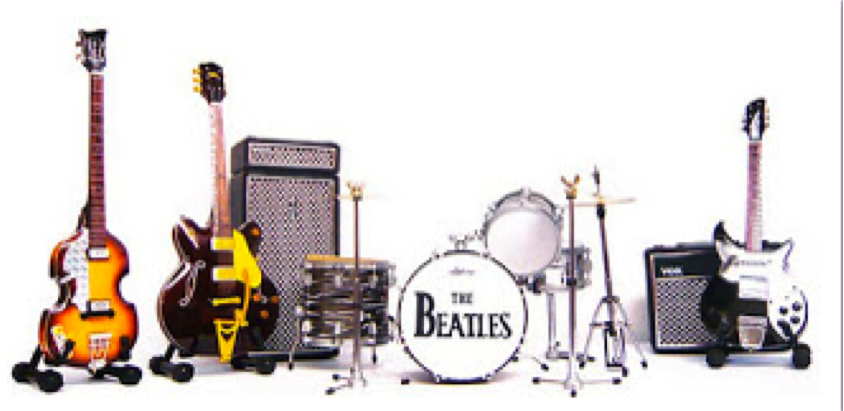Detailed Treatment for My Music Video
Explanation for My Ideas, Scene-by-scene, including: Editing, Mise-en-Scene, Camera Shots/Angles, and Sound:
Scene 1:
The first scene in my music video will mainly feature two shots - an extreme close up of a car being started, and a close-up of a car's horn being used. I will do this as in the song I have chosen, the song starts with these diegetic sounds, therefore incorporating those sounds visually in my music video will kick the song off at a high tempo pace. The editing for these shots will be quick and clean, thus keeping up with the pace of the song.
Scene 2:
After that particular scene and setting of the video, there will be a normal shot of the entire band, introducing the audience to the band that are playing the song they are listening to. The setting will be a secluded area, most likely a garage - this is because most Indie and Rock bands record their earlier music (before they are a signed artist) in a garage, as it is a quiet place where the band can have fun and there is no pressure; I will try and signify those reasons to the audience. This scene will take place when there are no lyrics, so it's just the instrumentals of the song. All scenes of the band together will be shot inside the garage. When there are guitar riffs and solos, there will be extreme close ups shots from a low angle, so the audience can see the the band member playing the guitar in time with the music.
Scene 3:
Once the lyrics of the song start, there will be a change in setting. In connection to the lyrics, there will be a high angle shot of someone laying on his back, passed out, in the back of the same car in the first scene. The lead vocalist will be sitting there next to him, playing the guitar and singing, as if he is a ghost - I believe that this will signify to the audience that the band are trying to tell a story, and this scene could also add comediac values. Possibly, the car may be being driven, whilst the things are being done in the background; this depends on how realisticly it can be done.
Scene 4:
When the lyrics indicate so, there will be a fade into the next scene. This scene will consist of the same person in the taxi, wondering around a house. This is where the mise-en-scene will have to be up to the standard of the lyrics as the band mention that the house is something that is scary - for this I may use a normal house, but decorate the walls in the way that is described by the lyrics. Low angle shots will be used in this particular scene, to demontrate the eerie atmosphere of the setting. I will also try and find a Willow Tree, as that is the biggest part of imagery in the song. The camera shot used for the Willow Tree will be a long-shot, in order to see the full size and scale of the object.
Scene 5:
This is the scene where the first chorus will take place. I inted to have a close up of the person in question looking like he is crying, or regretting the things he has done in the past. Or I will to a low angled shot of rain falling on pebbles, creating the imagery of the chorus. All of this scene will take place at night, because a "blackout" is being described in the lyrics. The protagonist will be talking to a girl he has picked up on a night out, either in person or on the phone. He will be lip syncing in time with the chorus, as will the lead singer of the band, who is standing or sitting next to him, in the same way as the first scene, as if he is telling the story of the song.
Clean-cut editing will take place here after the end of the chorus, because there is a long instrumental. The scene will one again take place in the garage where the band is playing and having fun, using the same kind of shot that was seen in the first part of the music video.
Scene 6:
The band will start to sing the thrid verse of the song, then there will be a blurry cut to the main protagonist on his bed on the phone, talking to the same girl, or a different girl. The bedroom will look messy, to signify the attitude of this man, and also to stereotype him with his age group, thus showing the target audience of the song. The screen could be split in half to show him lying on the bed, with the lead singer in the background, and to show the girl he is talking to getting angry at him because he is trying to break up with her. If the editing software doesn't allow me to do that, I will show him lying on the bed talking to the girl on the phone. The Willow Tree is also mentined again in this verse. This time, if I can find a Willow Tree, there will again be a long shot of the Willow Tree, but instead with the band playing in front of it, starting to sing the chorus.
Scene 7:
There will be the same continuous shot of the band in front of the Willow Tree. It will then clean-cut, to keep up with the tempo of the song, to the rain falling on the pebbles now, and then showing the main character looking remorseful about how he ended the relationship with this girl. The main character then goes on a "night out" again and has the same consequences, again asking a girl if they should go to his house or her house. There will be panning shots, tracking shots, two-shots and over the shoulder shots used in this particular scene. The band will once again close the song out in their garage and in front of the Willow Tree. Once the song ends, the band will get out of their positions, walking towards the camera - once they get to the camera there will be a clean cut, showing "match-on-action" adding realism, of the band walking out of the garage and closing it, saying goodbye to eachother and getting on with their lives, as if nothing happened.
Scene 8:
The final scene will take place after the song end, and will show, more or less, a repeat of the first scene - the character will be lying on his back again in the back of a car, showing the audience that the cycle of the song will be repeated. There will be a fade to black and then the same of the song will zoom in and out of the screen, with Not My Day's band logo.
In terms of the story that the music video is trying to tell, I believe that this plan for the song will appeal to the target audience of young adult males and young adult females, beacuse the song is about a usual Saturday night out. All these scenes can be viewed of sorts in my storyboard of my music video. Having seen many 'Indie' band music videos, I also believe that my video will conform to the codes and conventions of typic Indie band's videos, such as the Arctic Monkeys and The Vaccines. The camera angles and shots used will demonstrate this, as will the use of the mise-en-scene in the video.
Animatic for My Music Video
This is the animatic for the music video which I plan to do and, as you can see, the animatic follows the treatment for my music video. I will try to complete my music video as accurately as possible to my animatic and treatment.
Applying Goodwin's Theory
As mentioned in an earlier post, Goodwin's Theory has many key parts to analyse a music video. The key parts of Goowin's Music Video Theory are:
> Music videos representing genre characteristics through their stage performance
> Links between the music video and the lyrics of the song
> Relationship between the music and the visuals in the music video - for example, when the tempo of the song has slowed down, the visuals move at the same or a similar pace.
> Image of the artist show heavily in the music video - close up camera shots and angles to see the artists face.
> Frequent notions to media devices such as laptops and phones, representing technology and ways to see the music video.
> Intertextual references to things, such as music videos, in the past.
In my music video, the part of Goodwin's Theory that I will take most reference to is "linking the music video to the song's lyrics". The reason as to why I will be conforming to this point the most is because I feel that the song's lyrics tell a story which the audience would like to be interpreted for them. I feel that a lot can be done and interpreted from these lyrics, as mentioned in the treatment for my music video.
Another point to which I will conform to is the "frequent notions to media devices". As the band is quite modern, phones and various other media devices will be seen in the video, as this would also appeal to the target audience.
One final link to Goodwin's Theory and my music video will be "representing genre characteristics through the stage performance". The reason behind conforming to this point is because there will be many shots and camera angles of the band performing the song at various locations and having a good time, which is what bands from the Indie genre usually do.


























